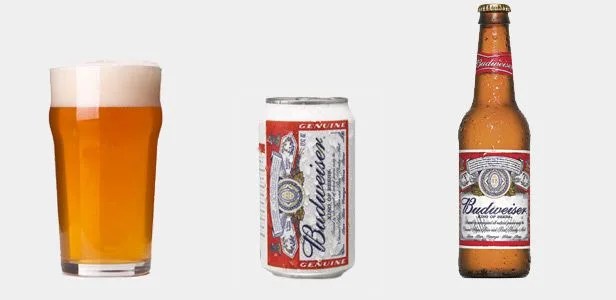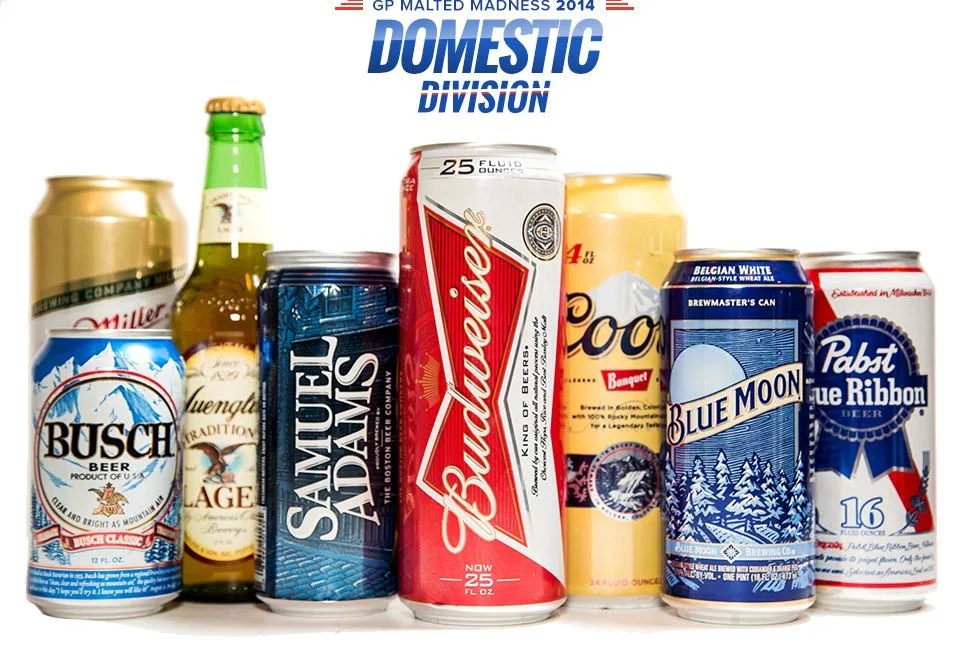The top 10 most popular domestic beers (including light beer) sold in America are brewed by only two companies: AB InBev and MillerCoors. If you look at the top 25, that number rises to five. Except for Sam Adams Boston Lager and Blue Moon (the only non-lager), this entire division is brewed with corn or rice products — along with barley, hops and yeast — in order to lighten the flavor while maintaining alcohol content and carbonation. In fact, Anheuser-Busch (the AB in AB InBev) is the largest purchaser of rice in the U.S. All this is to say — and the light lager category will drive this point home — these beers taste really similar.
Despite this, highly respected beer competitions like the Great American Beer Festival and the World Beer Cup have an “American-Style Lager or Light Lager” category at their awards ceremony. Which American lager took home gold at the annual Great American Beer Fest? Budweiser Select in 2013 and Pabst Blue Ribbon in 2012. At the prestigious World Beer Cup, held every two years? Coors Light.
The results of this division (found at the bottom of the page) were determined by three of the Gear Patrol staff (we split up the divisions to prevent taste bud fatigue, also known as getting drunk). As a reminder, the tasters made their decision based on the question: “Which beer would you want to order two or three more of?” So when you see that Blue Moon got swept by Coors Banquet, calm down. We understand that the cloudy, wheat beer is tremendously popular (its sales volume increased 13.5 percent from 2011 to 2012 alone), and in a one-off tasting it may have won, but we’d rather buy a keg of Coors Banquet than a keg of Blue Moon and have to cut up all those oranges.
How We Drink

Cans: Half of all beer consumed in America comes in a can. While you may associate them with cheap beer, aluminum cans are beer’s best protection against sunlight and oxygen, which are the two most common factors in turning a good beer bad (through skunking and oxidation), according to Ron Kloth, a certified cicerone and owner of Papago Brewing Co. This has led some craft brewers to start canning their beers, which are meant to be poured into glasses.
Bottle: Over a third of the suds we drink are purchased in a bottle. After some extensive pry-off versus twist-off research, we have come to a few conclusions. (1) Pry-offs are associated with craft or premium beers (due to the relative cheapness of capping with pry-offs, micro-brewers start there first). (2) The pry-off capping process affords the opportunity to use stiffer cap lining material, which better seals the bottle against oxygen and prevents an oxidized taste (this was the reasoning behind Sierra Nevada’s change from twist-off caps to pry-offs in 2007). 3) Bigger companies, your Budweisers and Miller Lites and so forth, prefer the twist, saying there is no appreciable difference in quality (and Kloth agrees) and that opening by hand allows for a more convenient drinking experience. For mass-market brewers, everything boils down to removing barriers between you and inebriation.
Draught: About 10 percent of beer comes straight from a keg, whether at a bar or a party. Though the least popular of the three main ways we drink, pouring any beer straight into a glass is the best way to drink it. Pouring releases the pent-up carbonation, reducing the CO2 “bite”, and creates the beer’s head, which should ideally be about two fingers thick. This helps you smell the beer, which has a lot to do with how you its perceive taste. But if you’re drinking a Busch Light, who the hell cares?




